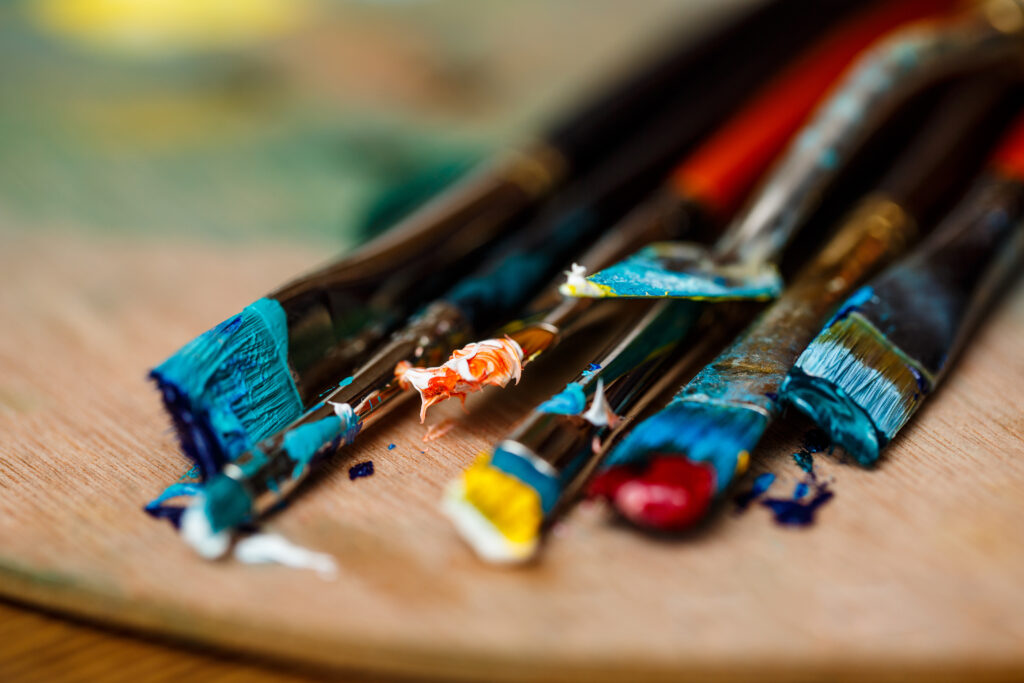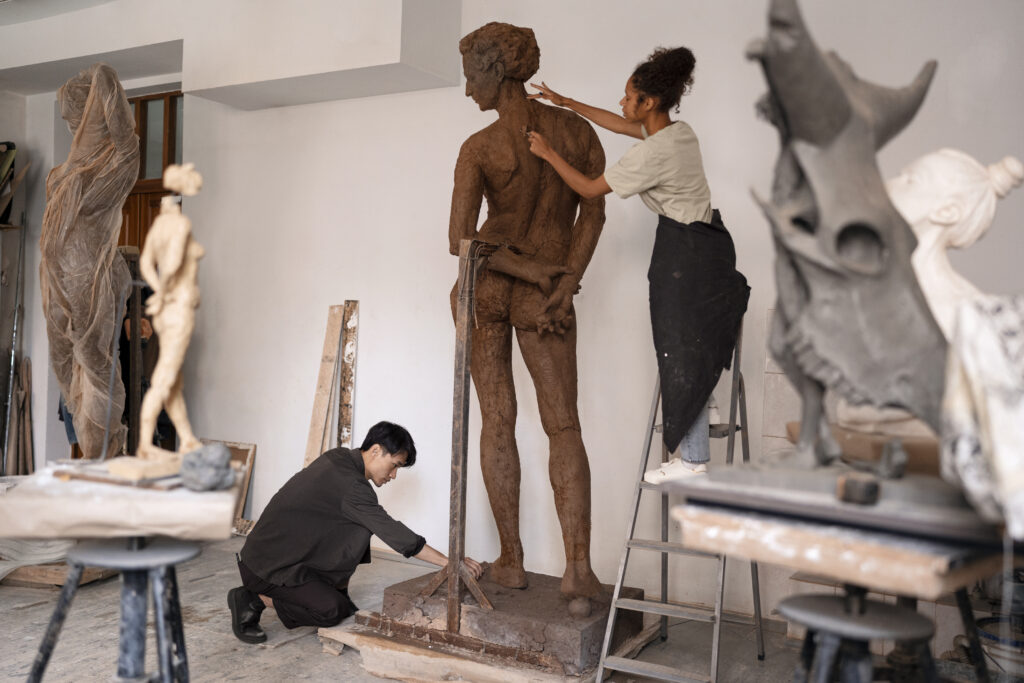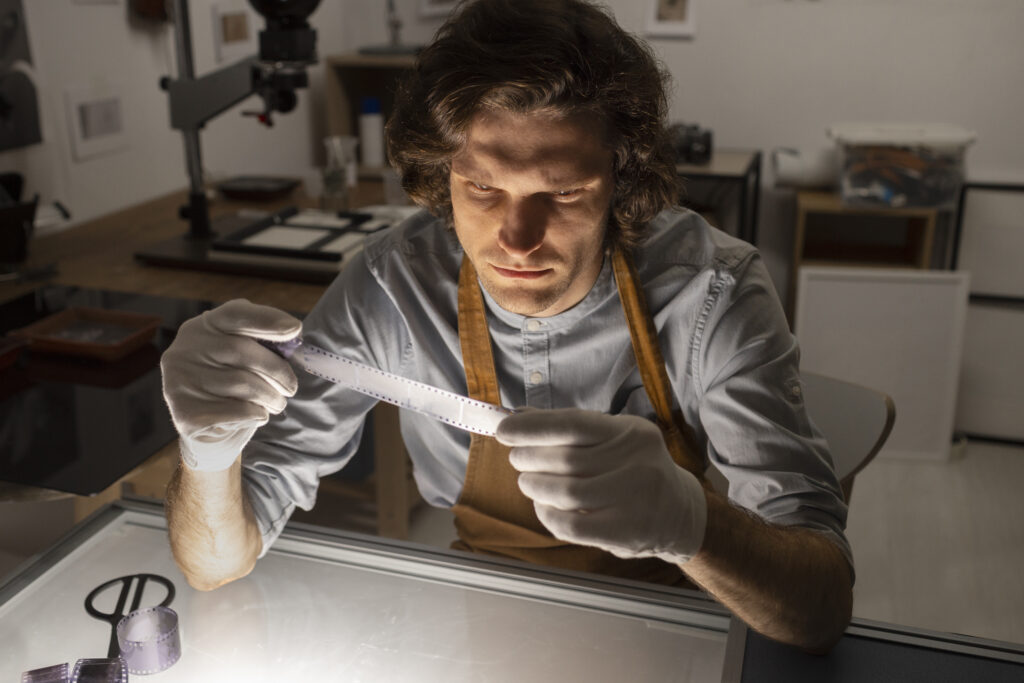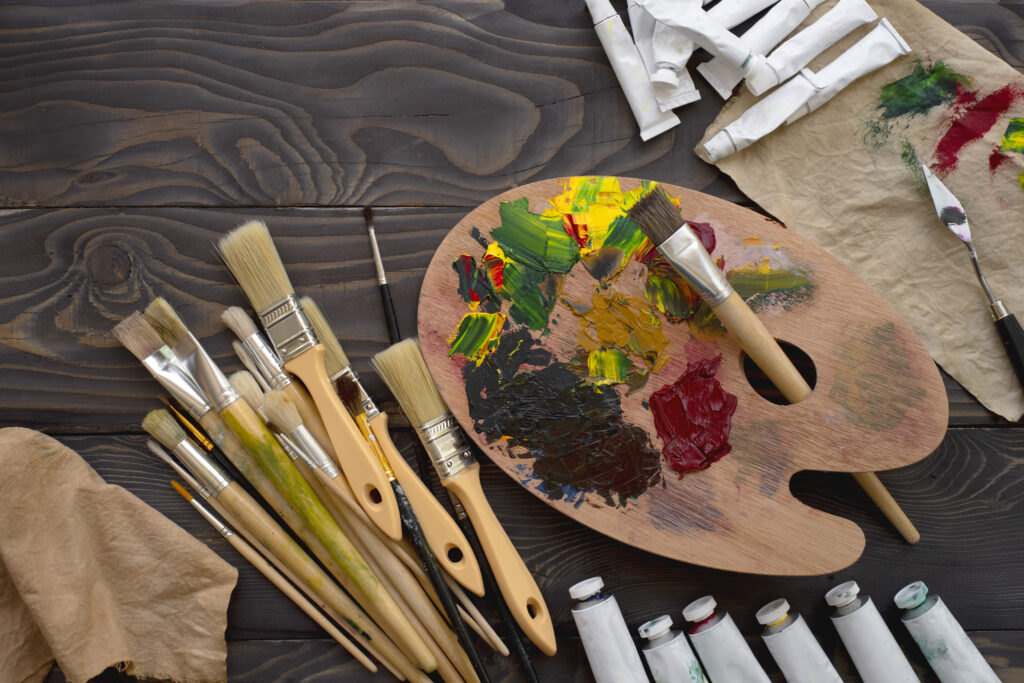Artistry’s Evolution: 3 Tips with Artificial Intelligence
The fusion of art and artificial intelligence (AI) is reshaping how we think about creativity. It’s pushing boundaries and opening up new opportunities for artists. When artists bring AI into their creative process, they must consider how to use it effectively. They should carefully combine old and new methods and keep their unique touch. This isn’t just about the tech; it’s about what creativity means.
This conversation concerns how artists can work alongside AI to create something groundbreaking. It sets the foundation for a future where art goes beyond traditional limits. Artists need to see AI as a tool that can help them express their visions in impossible ways. But, at the same time, they should not lose the personal touch that makes their art stand out.
Key Takeaways
- Artists merge AI for fresh creation styles.
- Keeping a unique voice ensures art’s authenticity.
- Ethical AI use shapes future art landscapes.
Understanding AI’s Role
Artificial intelligence (AI) has become a crucial partner for creative minds in today’s art world. It’s reshaping how artists think and bring their ideas to life, pushing beyond what’s been done. Artists are exploring new realms of creativity, thanks to AI’s power to sift through heaps of data from various art forms, uncovering patterns and insights that were once out of reach. This blend of AI and creativity gives artists fresh ideas and perspectives, enriching their work.
AI’s ability to evoke emotions through art highlights its role in deeply reflecting human emotion and connecting with people. The collaboration between artists and AI is paving the way for limitless artistic exploration powered by innovative tools and a spirit of cooperation.
Blending Techniques

The blend of traditional art and AI represents a significant shift in how we create. By mixing old-school techniques with AI, artists are making pieces that push the limits of what we thought was possible. This mix allows for a unique combination of styles, textures, and visuals, leading to groundbreaking and eye-catching art.
AI has become a vital tool for artists, opening new ways to combine different artistic styles. This fusion challenges and reshapes our understanding of art. It makes the art more appealing and brings to life stories that are intricate and full of detail. Artists who use AI to blend various styles are leading the charge in pushing traditional art into new territories. Their work is a colorful collection of creations that combine classic art’s emotion and detail with AI’s precision and adaptability. Through these creative blending techniques, art is evolving into a realm where anything seems possible.
Preserving Individuality

Merging traditional art with AI brings a fresh wave of creativity. To keep the artist’s signature style in AI-generated art, artists must weave in their distinct flair and choices. This mix of art and technology opens new doors for creative expression, ensuring the artist’s personal touch shines through. Achieving this balance involves knowing how to tweak AI tools to showcase an individual’s artistic style.
Customizing settings like color and layout preferences results in art that reflects the artist’s vision. Setting limits on what the AI can create helps keep the art true to the artist’s style. Through hands-on refinement of AI’s work, artists produce genuinely one-of-a-kind pieces.
Artists must dive deep into technology, tailor settings, and actively guide the AI’s output. By making intentional choices, such as choosing specific colors, imposing theme restrictions, and tweaking the layout, artists can ensure their AI-assisted creations carry their unique signature, making each piece reflect their artistic identity.
Exploring Generative Art

Generative art is at the cutting edge of artistic innovation, blending human creativity with the power of AI. Tools like Runway ML and Artbreeder are changing how artists create, making it possible to mix different styles and come up with something entirely new. This field uses advanced AI models to push the limits of what we thought possible in visual arts. It’s a space where technology meets traditional art, leading to groundbreaking forms of expression.
The collaboration between artists and machines produces artwork that’s not just eye-catching but also shows what happens when various styles and visions come together. By combining human creativity with AI’s capabilities, we’re seeing a broadening of what art can be. This blend of old and new is a critical moment in art’s evolution, showing how tech can boost human creativity and open new paths for exploration.
Generative art demonstrates the exciting possibilities when technology enhances human creativity, creating stunning visuals that were once beyond our imagination.
Navigating Ethical Boundaries

When artists use artificial intelligence (AI) in their work, it is critical to look for biases in AI systems. This ensures all people are fairly represented, making art more diverse and inclusive. Being open about how much AI is involved in making art helps keep everyone on the same page. It reassures the audience about where creativity comes from, keeping trust alive.
Additionally, it’s critical to remember the value of the human touch in art. The artist’s unique signature should shine through even as AI plays a role. This balance between AI and human creativity encourages innovation while honoring the essence of art.
Clear and straightforward communication about AI’s role can prevent misunderstandings. It’s about showing that art, at its core, is a human endeavor, enriched, not replaced, by technology. Thus, artists can push boundaries responsibly, blending AI with their unique perspectives to create something new and exciting.
Enhancing Creative Process
Artificial Intelligence (AI) is changing how artists create by introducing tools like Runway ML and Artbreeder. These tools provide new patterns and designs, making it easier for artists to create unique visuals. They use AI algorithms to help artists break free from traditional art and design limitations.
With NeuralStyler and DeepArt, artists can now mix different styles in their work. This process, known as style transfer, allows for the blending of various artistic expressions with ease. It gives artists more flexibility to innovate and create something new.
Generative art, powered by AI, is leading the charge in artistic innovation. It’s not just about creating art; it’s about pushing boundaries and questioning what creativity means. This type of art combines human intuition with the precision of machines, resulting in eye-catching visuals. When artists and AI work together, it enhances creativity. This partnership leads to interactive installations and narratives that engage audiences in fresh ways.
Embracing New Mediums
In today’s art world, artificial intelligence (AI) has become a groundbreaking partner in creating new types of artwork. This fusion of classic art forms with digital advancements allows AI to play a role beyond just a simple tool—it acts as a creative partner.
Artists use platforms like MidJourney to merge their skills with AI’s capabilities, pushing the boundaries of what art can be. This partnership is transforming how art is made and perceived, introducing a fresh wave of creativity that combines human imagination with the precision of technology.
Hybrid Art Forms
Artists are creatively merging traditional art techniques with artificial intelligence (AI) capabilities to craft new, hybrid forms of expression. This innovative blend transforms the art world, making it more dynamic and reflective of our digital era. By integrating AI with conventional art forms, artists enhance their creative processes and challenge the very definition of art itself.
One way they’re doing this is by combining classic methods like painting or sculpting with digital elements created by AI. This approach generates unique outputs and opens up endless possibilities for creativity. Another exciting development is the fusion of physical artwork with digital elements, creating pieces that can change or evolve, offering viewers a more interactive experience.
These advancements highlight the collaborative nature between human ingenuity and technological progress in art. They pave the way for visually stunning works that are as much about technology as they are about artistic vision. This intersection of AI and traditional art is not just about creating new art forms; it’s about reimagining what art can be in the modern world.
AI as Collaborator
Teaming up with AI, artists find new ways to push their creativity to the limit. This partnership allows for a unique blend of human imagination and technology, giving rise to art that defies traditional boundaries. With AI’s ability to process and suggest new combinations, artists can experiment with different styles and elements. This collaboration is not just about creating art; it’s about redefining what’s possible and making the creative process more interactive and exciting.
The connection between artists and AI is transforming the art world. It’s a two-way street where the artist’s intuition and AI’s computational power come into play. This synergy leads to extraordinary artworks that stand out for their originality and appeal. For artists, this means venturing into territories that were once thought unreachable. AI in art opens doors to endless possibilities, encouraging artists to think outside the box and innovate like never before.
Collaborating With Algorithms
Collaborating with AI in art creation is a game-changer, pushing the envelope for what’s possible in the arts. It’s an exciting time as artists and technology blend, creating new forms of expression. This partnership doesn’t just introduce new tools; it redefines the art world’s limits, inviting artists to dream bigger.
Key points in this collaboration include:
- Boosting Creativity: AI gives artists new capabilities, making bringing their ideas to life more accessible.
- New Forms and Narratives: Using AI, artists can create things never seen before, breaking free from traditional art constraints.
- Working Together: The relationship between human creativity and AI is growing stronger, offering fresh opportunities for innovative work.
- Joint Creation: AI provides a space where artists and algorithms can create together, leading to extraordinary art.
This relationship between artists and AI doesn’t just enrich the art community; it paves the way for future tech and creative collaborations.
Fostering Human-AI Interaction
In art, collaboration between humans and AI is a significant development. It brings together human creativity with the processing abilities of AI. This partnership helps artists understand technology better and allows them to break new ground in art. By using tools like MidJourney and working with groups like StartxLabs, artists can work alongside AI. This helps to push the limits of what we consider possible in art.
Creativity and technology are merging in new ways, thanks to AI. This union is making it easier for artists to venture into areas of art that were once thought to be beyond reach. With AI, artists are not just creating; they are discovering new forms of expression. This is an exciting time for art as we see traditional boundaries being crossed. AI expands the scope of what can be achieved in art, making the impossible seem possible.
Enhancing Creative Collaboration
The rise of artificial intelligence in the world of art has changed how we collaborate creatively, leading to new partnerships between humans and AI that take creativity to new heights. This change is marked by:
- AI as a Tool for Artists: Artists now use AI to break free from traditional limits, using it as a tool for new ideas.
- Creative Partnerships: Working with AI brings unique collaborations that thrive on shared goals and mutual inspiration.
- Trying New Methods: The combination of human creativity and AI opens up possibilities for trying out new ways of making art.
- Working Together: There’s a special connection when artists and AI systems work together, mixing human creativity with machine precision to create something new.
This shift is moving us towards a future where art and AI merge, making creativity something entirely different.
Artists find that AI can be a powerful ally in this new era. It helps them explore new horizons in art by providing once-unimaginable tools. This partnership between humans and machines is not just about using new tools but about rethinking what it means to be creative.
Creative collaborations between humans and AI are more than just working together; they’re about inspiring each other. These partnerships open doors to styles and ideas that neither could have achieved alone. It’s a two-way street where both sides bring something valuable.
Artists are no longer confined to traditional methods. With AI, they can experiment and play with ideas in ways that were once impossible. This experimentation leads to a boom in creativity, with artists exploring new mediums and techniques that enrich the art world.
The idea of co-creation, where artists and AI work side by side, is revolutionary. It’s about blending the emotional depth of human art with the intricate details that AI can add. This partnership produces art that challenges our ideas of what’s possible, showcasing the power of combining human intuition with machine intelligence.
As we move forward, the intersection of art and AI is likely to grow only more integrated, offering exciting opportunities for creativity that we’re just beginning to understand.
Bridging Intuitive Gaps
Artificial intelligence (AI) is pivotal in blending humans’ creative spirits with technology’s advanced capabilities, especially in art. When artists team up with AI, they can merge their natural intuition with the analytical power of machines. This collaboration doesn’t just turn creative ideas into stunning digital art but builds a positive working relationship between people and technology. AI’s role in art introduces fresh viewpoints and opportunities, pushing the boundaries of what’s possible and taking art to exciting new levels.
Collaboration between humans and AI leads to a more interactive experience where both parties contribute significantly. This partnership ensures a smooth fusion of human insight and AI’s processing power. When creating digital art, AI serves as a tool that transforms imaginative concepts into accessible formats. It’s about finding a sweet spot where artistic vision meets tech progress, keeping the creative essence intact while embracing technological possibilities.
This approach highlights why it’s vital to encourage a close interaction between humans and AI in artistic endeavors. It’s about using new tools and reimagining the creative process. Through such collaborations, art is evolving and becoming more inclusive, allowing for a broader range of expressions and interpretations.
Expanding Artistic Boundaries
The interaction between humans and AI transforms how we approach art, making it more inclusive and innovative. This collaboration is breaking down the walls that once defined the limits of creativity. Here’s how:
Humans and AI are joining forces, leading to a fusion of instinct and technology. This partnership broadens the scope of art and introduces new forms of creative expression. Artists working with AI, such as through tools like MidJourney, can now produce digital artworks that were once unimaginable. This is not just about using new tools; it’s about thinking differently about art and its potential.
The result is a dynamic and evolving art scene. It’s an exciting time where the boundaries of art are constantly being pushed further, thanks to the contributions of AI. This shift is making the art world more accessible and varied, allowing for a greater diversity of voices and visions to be heard and seen.
The blend of human creativity with AI’s capabilities sets the stage for a future where art is more explorative and limitless. This collaboration is a testament to the power of combining different perspectives and tools in the creation process.
Anticipating Future Trends
The intersection of human creativity and machine intelligence in art sets the stage for a remarkable evolution. This partnership is fundamentally shifting how we think about artistic creation, creating an era where art is no longer confined to traditional methods and materials. AI’s input in the creative process is changing the game, allowing for a level of innovation and experimentation that was previously unimaginable.
| Trend | Impact on Art | Potential |
|---|---|---|
| Collaborative Creation | Artists and AI working together | New artistic mediums and styles |
| Expanding Horizons | AI tools pushing the limits | Broader scope for creativity |
| Creative Catalyst | AI’s ideas spark human imagination | New experiences in art |
Artists today can look forward to a future where the capabilities of AI enrich their work. This collaboration doesn’t just change how art is made; it expands what art can be. The blending of human and AI contributions is paving the way for artworks that could not have existed before, opening up a world of possibilities for artists eager to explore new horizons.
In this new landscape, the fusion of human insight and AI’s processing power creates a dynamic synergy. This partnership not only breathes new life into the art world but also invites artists to venture into uncharted territories of creativity. The future of art is bright, promising a canvas of endless possibilities where humans and machines together craft the next masterpieces of our time.
Frequently Asked Questions
How Will AI Evolve Human Creativity?
- AI sparks new art forms, merging tech and creativity.
- Creative algorithms lead to unexpected art outcomes.
- Ethical AI use enhances emotional connections in creativity.
What Is the Evolution of Artificial Intelligence?
- AI evolution moved from simple to complex systems.
- Ethical concerns like bias and privacy are now crucial.
- Neural networks spark rapid advancements and debates.
What Are 7 Stages of Artificial Intelligence?
- AI progresses from simple data handling to complex thinking.
- Incorporates ethics, learning technologies, and intelligent decision-making.
- Moves beyond data to cognitive abilities, shaping our future.
What Will AI Look Like in 10 Years?
- AI ethics guide future development, focusing on responsible use.
- Predictive analytics transform industries with insightful forecasts.
- Collaborative robots reshape work, enhancing human-robot cooperation.
Conclusion
The use of artificial intelligence in the art world marks a significant change in how we create. Artists can find their way in this new environment by knowing how AI works, mixing methods, and keeping what makes us unique. Thinking about ethics and how people and AI work together as art keeps changing is critical. Staying ahead of recent trends and trying fresh ways of creating will help keep the mix of human creativity and AI robust. This will lead to new and exciting art, significantly changing the scene.
Artists must keep their unique voice while working with AI. This helps ensure art stays personal and accurate to the artist’s vision. We should also monitor how these changes affect the art world. Being open to new ideas and tools can lead to unique creations that are impossible otherwise. This approach will keep art moving forward, blending the best of both human and AI contributions.